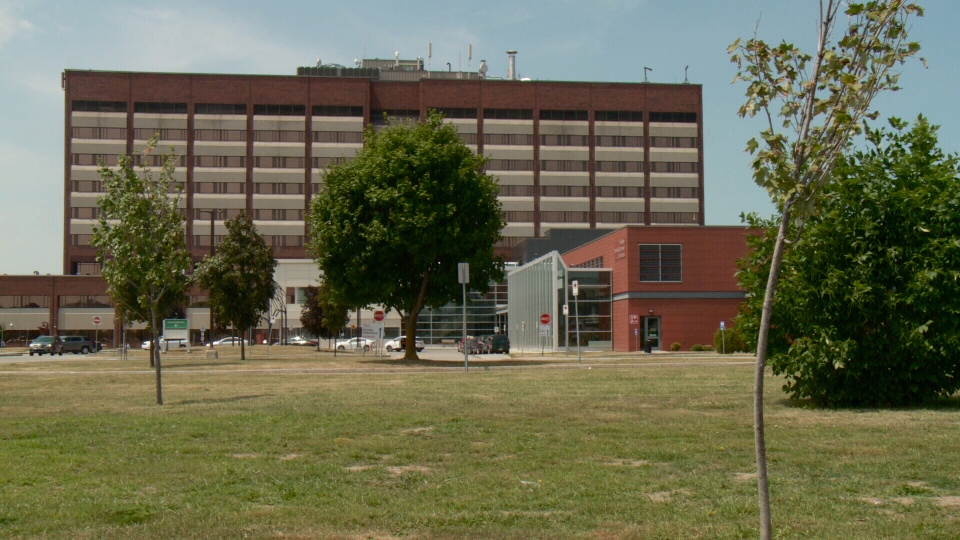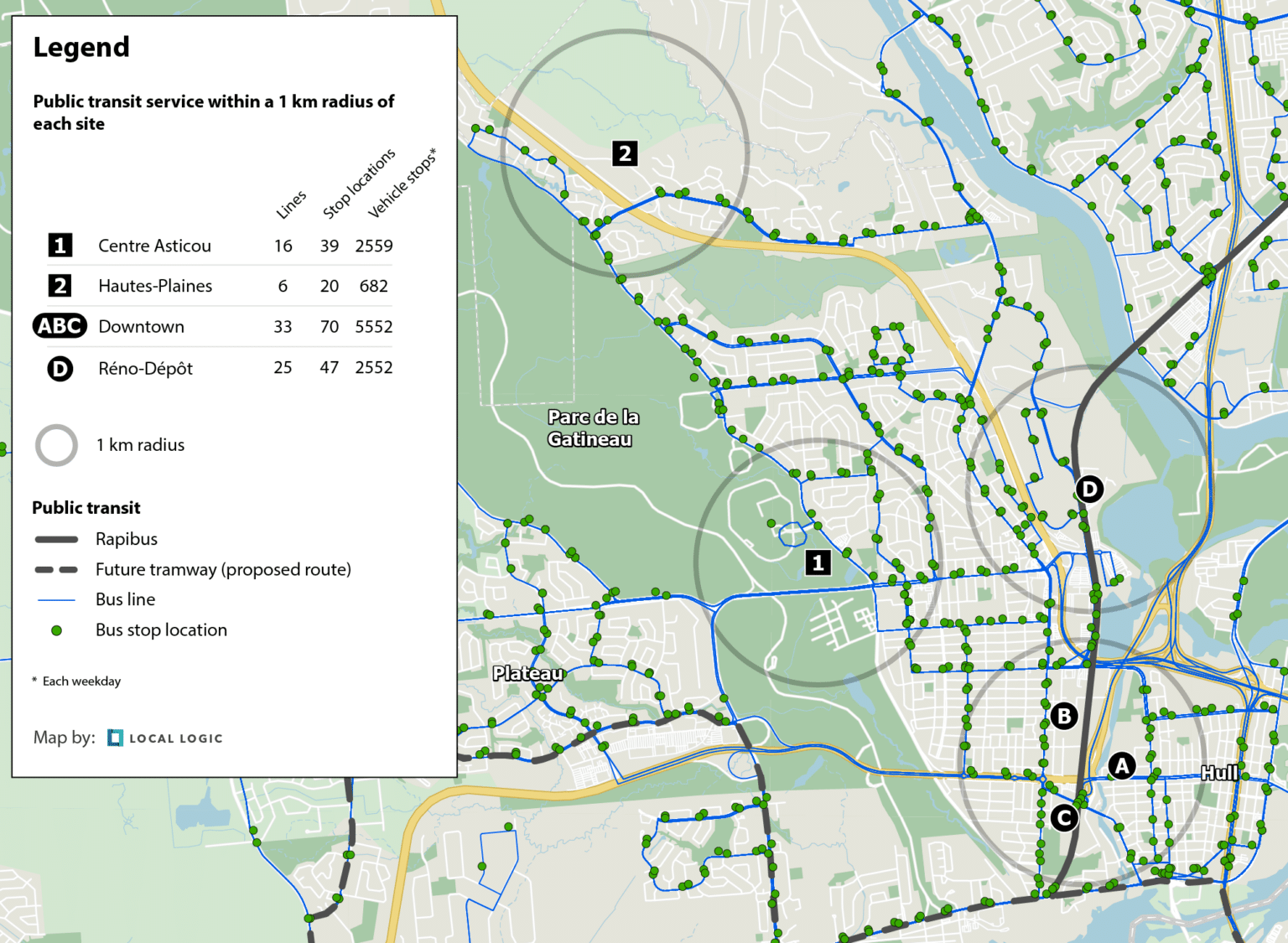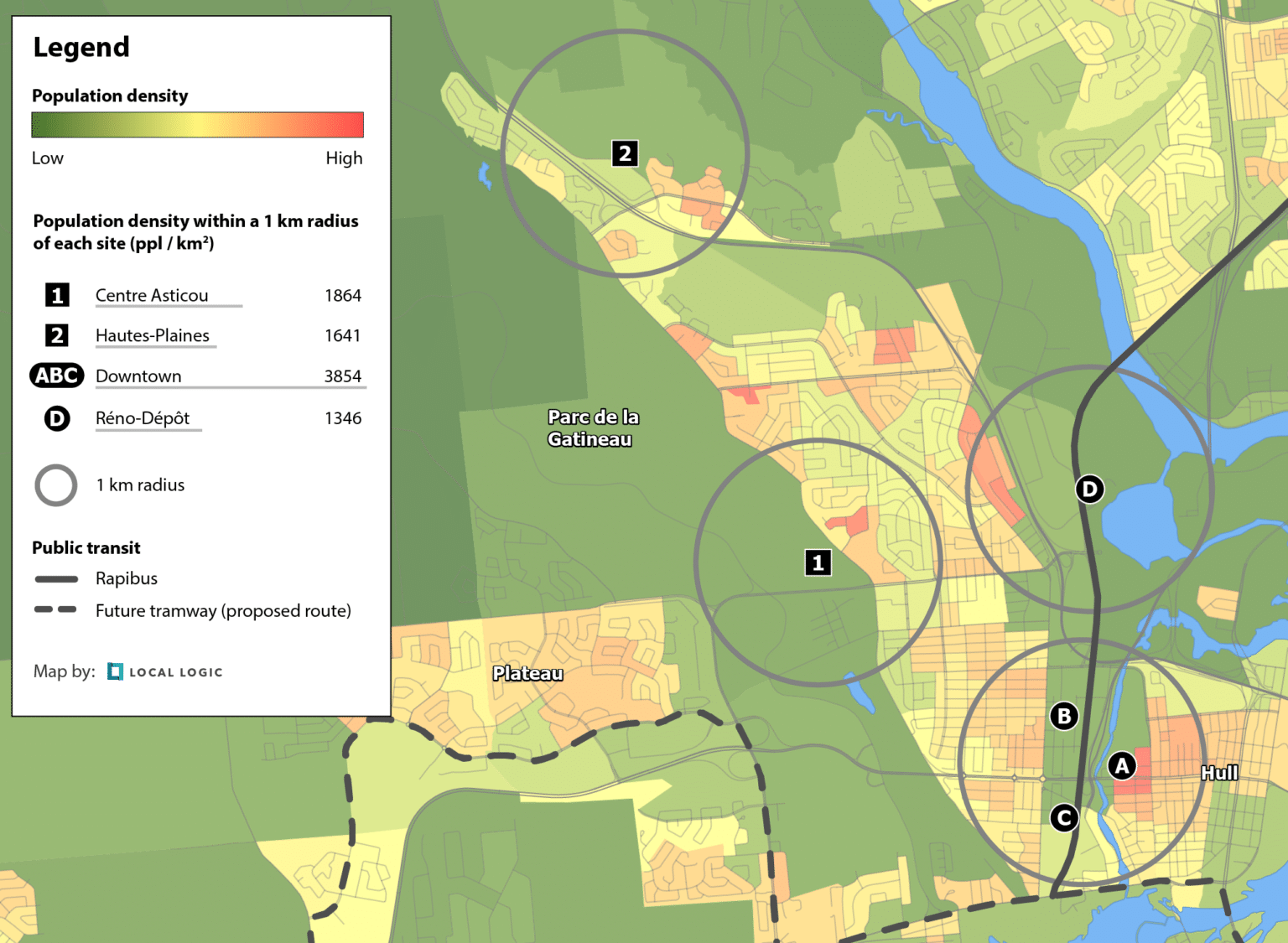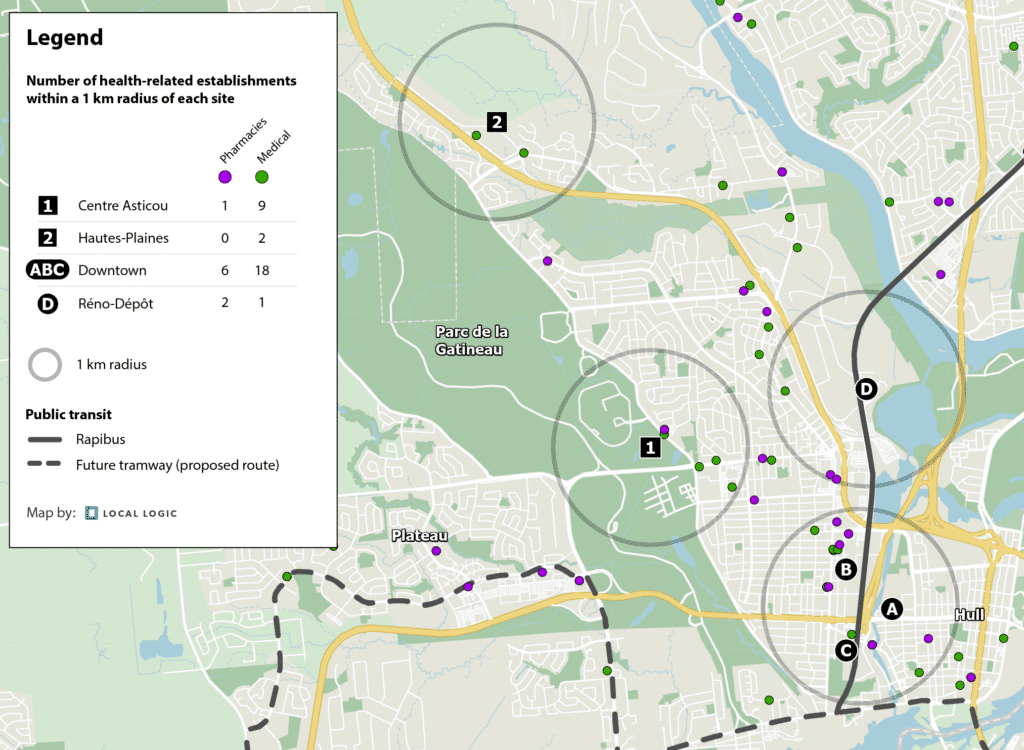Product Spotlight: NeighborhoodWrap
Residential
| 20 Oct 2025


Commercial
Location Intelligence Solutions
Earlier this year, a report arrived at the office of the provincial government of Quebec. The Urban Development Institute of Quebec (IDU), an independent nonprofit supporting the area’s commercial real estate interests, was concerned about the province’s pending decision about the site of a major hospital project.
The provincial government was considering two sites on the outskirts of the city of Gatineau on which to build a 600-bed, $2 billion hospital. The report, built on state-of-the-art land use data analysis provided by Local Logic, argued that the sprawl caused by construction at the cheaper but distant suburban sites would carry significant downstream economic and environmental costs. IDU proposed four alternative sites, each located near the city center.
The project—and the provincial government’s decision to re-evaluate the site in light of public pushback—stands as an intriguing case study in the future of sustainable urban planning. As more and more governments and private actors grapple with the environmental crisis, the groundbreaking technology and data analysis pioneered by Local Logic will play a critical role in shaping our cities.
In the modern sense, zoning began to play a role in urban development during the Industrial Revolution. Polluted by hulking factories and crowded with unsanitary tenements built haphazardly to house their workers, cities had become centers of filth and disease. Responding to the public health crisis, city planners began zoning residential areas separate from industrial downtowns.
Over the decades, that well-intentioned concept was co-opted for more sinister intentions: zoning became a way to partition rich from poor, white from black. The practice also created downstream economic and environmental problems: by decentralizing the urban space, planners made it more difficult for citizens to move from place to place and increased the energy output required to do so. Suburban sprawl had subjugated cities and their residents to the car.
The city of Gatineau, to its credit, is trying to avoid that costly sprawl. The municipality’s Urban Plan calls specifically to “promote the mix of uses and the compactness of developments to bring activities closer together and promote healthy lifestyles.”
UDI wanted the provincial government to heed the municipal densification plan by building the hospital near the city center. So they turned to Local Logic.
To evaluate the four centrally located sites—labeled A, B, C and D in the maps below—and two suburban sites—labeled 1 and 2—Local Logic examined four categories: accessibility, residential population density, efficiency and economic vitality. Local Logic pulled from thousands of disparate data sets—including transit agency and commercial real estate databases—into purpose-built algorithms to mine insights.
All four of the central sites were located along the city’s Rapibus public transportation route and major highways, and one of the sites was in the immediate vicinity of a future tramway. Neither of the two suburban sites were well serviced by public transportation or highways.

Public transit service within a 1 km radius of each site
The existing population density also impacts an area’s ability to support a sustainable community. A dense residential population ensures proximity to more services and jobs. The more people that live in the immediate and surrounding areas, the less car travel required.
Local Logic found that three of the four central sites had more than 3,854 people residing within a one-kilometer radius. The two suburban sites each had fewer than 1,800 residents nearby, which would foster urban sprawl as people gravitated out toward the hospital and its supporting businesses.
Put directly, building the hospital downtown would make it closer to more people.

Population density within a 1 km radius of each site (ppl/km2)
Local Logic next evaluated the efficiency of each area relative to the hospital’s needs. A hospital of this size must rely on a healthcare ecosystem; a high density of existing health facilities would require less travel as patients and staff move between the hospital and supporting institutions. Unsurprisingly, Sites A, B, and C had a higher concentration of proximate health facilities than the suburban sites.

Number of health-related establishments within a 1 km radius of each site
Finally, Local Logic examined the economic vitality of each site. A hospital of this size will require various basic amenities—residences, restaurants, and retailers, to name a few—as players in the life sciences, doctors’ offices, and ambulatory care crop up to support the ecosystem.
Each of the four central sites—particularly A, B and C—already had a significant number of shops, grocery stores, and residences within close proximity, revealing these areas to be commercially active and supported by existing infrastructure. However, building in the much sparser areas of 1 and 2 would draw support away from existing businesses as new ones have to be built on the periphery, in turn requiring the municipality to finance new public infrastructure to support them.

Number of commercial establishments within a 1 km radius of each site
On April 2, 2022, just two weeks before construction was scheduled to begin nearly 40 miles from the city center on Site 2, the Quebec government announced it would reevaluate the Gatineau hospital site.
Though determining cause and effect in the often opaque government decision-making process is difficult, Local Logic feels strongly that the choice to reconsider the site location was influenced by the UDI report and the land use analysis on which it was built.
And on June 22, 2022, after much pushback from numerous groups, including a business coalition, elected officials, and local activists, the provincial government officially decided to move the site closer to downtown.
More specifically, they moved it to one of the sites recommended by IDU – recommendations based on data from Local Logic. The new site is less than half the distance from downtown Hull as the previous site, is much better served by public transit, and has many more services within walking distance.
With this final decision, Local Logic embraces the province’s reevaluation as a positive indication that data-supported sustainability analyses will become the norm in urban planning. Traditionally, politicians and city officials have elected the cheapest sites for major infrastructure projects or those that support them politically.
However, data like that provided to IDU by Local Logic reveals the hidden economic and environmental costs of these sprawl-inducing decisions.
💡 Curious about location insights?
Get a demo to learn how to grow your business with location data.